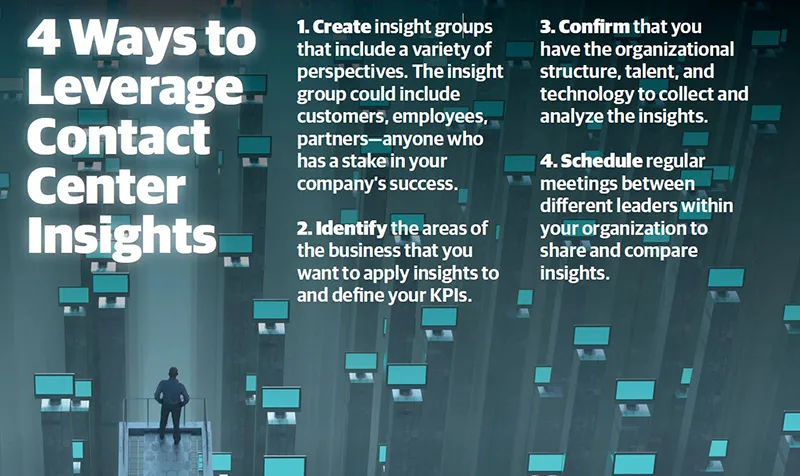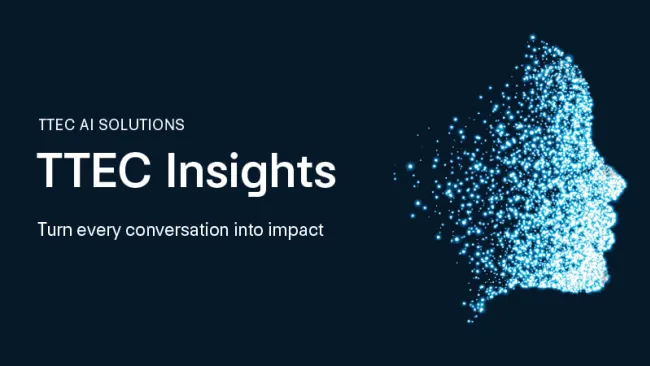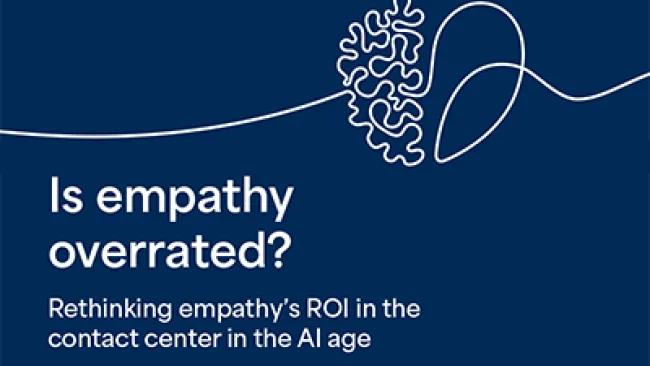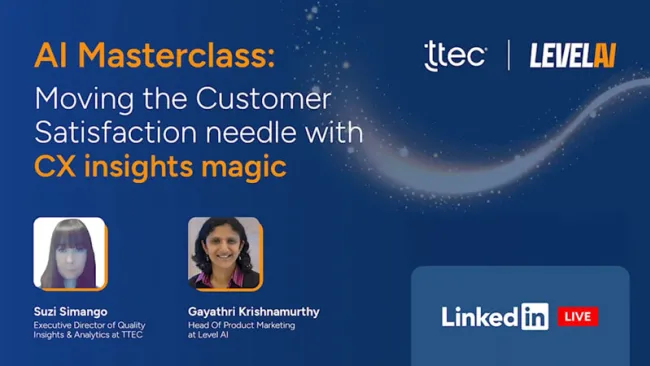If several customers report a product malfunction, is it a major cause for concern? It depends. Unless the company has access to relevant data points and insights, it’s difficult to know whether the best action is to issue a patch, a recall, or something else. And until recently, most companies based those decisions on siloed data.
Company leaders are increasingly looking to reverse that trend and leverage deeper customer insights from contact center interactions. This is the approach we’re seeing from our clients—they’re looking beyond the typical contact center paradigm and linking data across other parts of the organization to make more informed decisions.
Customer analytics that include many different data sources enable businesses to understand not just what happened, but also, who, why, and what next? By combining customer sentiment and voice of the customer data with marketing, product, and sales data, companies have a better understanding of who their customers are, why they’re contacting the brand, which campaigns resonate, and more. But without an effective system for processing those insights, companies are limited to asking, “How can I help you?”
How to find deeper call center insights
Instead, imagine a customer calls the contact center about a laptop he recently purchased. The laptop’s battery drains excessively fast. The associate can see from the caller’s profile that this is his first purchase and that he had recently visited the website support forum.
With the help of a virtual assistant, the associate quickly brings up the steps for a diagnostic test. The associate might say, “I see that you were recently on the support forum. Have you tried running this diagnostic yet?” While guiding the customer through the test, the associate learns that the customer plans to use the laptop for frequent gaming.
Let’s assume the associate successfully identifies the problem and solves it for the customer. The associate then recommends an extended warranty, since the laptop will be used heavily, which the customer agrees to. By the time the call is over, the customer’s warranty purchase, the content and sentiment of the call, and the customer’s Net Promoter Score (NPS) from a post-call survey are automatically entered into a cloud-based data platform, such as TTEC’s Humanify Insights Platform (HIP). The platform can integrate customer information with other types of enterprise data, such as CRM, marketing, and product data. Perhaps other customers were having a similar issue and returned their laptops. As it collects these data points, models built into HIP search for patterns that it converts into insights. One of those insights could be that the faulty battery is related to a larger issue that the product and R&D teams need to know about. The company might also send an email with instructions for other customers on how to fix the laptop themselves instead of returning it. These are insights that may have been overlooked had information from the contact center remained siloed.
A centralized data analytics platform can also help companies reduce costs and increase customer satisfaction. Helping health insurance members select the best health plan for their needs is a complicated process. While more people are using online tools to make their selections than before, there are those who still prefer to speak with a human associate.
The associate, however, is under pressure to help the customer fill out an extensive questionnaire quickly while still providing personalized and engaging support. Naturally, insurance companies want to automate as much of the process as possible.
Perhaps the caller had filled out the preliminary part of the application online or is an existing member. In these cases, the HIP system can pre-populate those sections for the associate. Other tactics include asking callers for their Zip Code or phone number, which allows the platform to retrieve demographic information.
Perhaps the associate learns that the member recently had a child. The integrated information in HIP allows employees to easily retrieve information about contributing to a dependent care FSA or prompts the associate to mention other benefits that the member may not have been aware of.
The more data that an associate has at his or her fingertips, the better the quality of support. It also reduces hold times as associates identify the right information faster and complete the call in less time.
Step back to understand the bigger customer insight picture
But wait, don’t companies already have CRM systems that are designed to enable personalized experiences? That’s true to an extent. While a CRM system might help marketing and sales teams craft targeted messaging and content, it doesn’t necessarily include data that’s mined from the contact center.
More specifically, a data analytics platform like HIP actively collects data and analyzes it for insights, whereas a CRM system’s main purpose is storing customer information. A CRM system, though, could be connected to HIP. In this scenario, each call and interaction that comes through the contact center is tagged and combined with CRM data, among other types of data to deliver deeper, more contextualized insights.
But as data insights grow richer and more contextual, performance metrics and measurements must evolve as well. For instance, first-call resolution (FCR) was a reliable way to measure the quality of customer support. It was a simple question of whether the caller’s problem was resolved. However, today a solution could require more than one interaction. Consider the previously mentioned laptop example. Perhaps the associate gives the customer instructions on how to run a diagnostic test, which takes a few minutes to complete and would be more convenient for the customer to call back when it’s complete.
Savvy care organizations are applying traditional contact center metrics like FCR, NPS, and average handle time to the customer journey for a more complete picture of the customer experience. What did the customer do before reaching out to the contact center? Has the customer already tried self-service and the support forum? Is this person a new customer? How price sensitive is the customer? Mapping questions like these to the customer journey can impact the conversation an associate has with a customer and increase the level of personalization.
Call centers as customer insight warehouses
The benefits of applying customer insights to business models and decisions are crystal clear. But without the collaboration and coordination of all the necessary departments, the results are murky. Organizational leaders are beginning to understand that the contact center should be actively involved in customer insights strategies.
And by using the right technology to tie data sources and customer metrics to the customer journey, leaders are realizing that customer insights are an ongoing strategy for not only transforming negative interactions into positive ones, but building loyalty in ways that the company would otherwise be blind to.
















